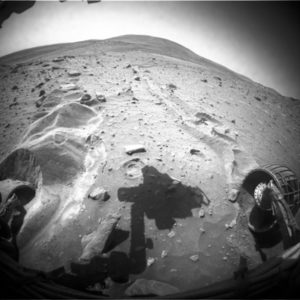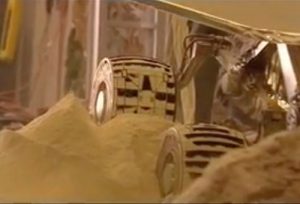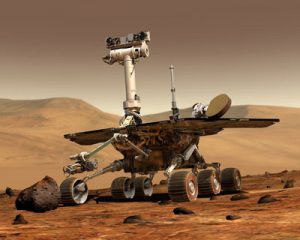Coupi, Inc. is the end result of efforts to develop particle modeling techniques to solve the complex problems NASA encountered in their planning process for a return to Earth’s Moon. At the behest of the George W. Bush administration, NASA identified a return to the moon as a priority. The lunar surface is essentially small, complex particles in low gravity that affect Rover mobility, sample collection, excavation and drilling. The behavior of these particles can’t be replicated on Earth.

Coupi, Inc. founders Anton Kulchitsky and Jerry Johnson were asked to develop a way to predict how NASA’s tools and lunar soils might behave when they interact. They new complex modeling was the way to approach this problem. They had to be able to model lower gravity, large deformations, and complex particle shapes moving in a vacuum. Traditional continuum modeling methods could not capture micro-scale interactions unique to particulate material like lunar soil.
Properties such as cohesion, friction, and modulus variations at the micro-scale affect bulk behavior of particles to different degrees, creating problems in real applications that simply don’t appear in continuum modeling. To really understand how lunar soils behaved, Kulchitsky and Johnson understood, one would have to look at particle-to-particle interactions. Even the particles could not be uniform, because lunar soil particles are not uniform.

This was not a new idea; Cundall and Strack developed a modeling method for granular assemblies in 1979. It was 15 years before the first two- and three-dimensional models based on the distinct (or discrete) element method (DEM) became available, and their utility was constrained by limited computational capacity. Even today, the availability of computer resources defines the complexity of particle modeling that can be done.
Developing our discrete element method particle model (DEM) allows us to use more recent programming techniques to model complex particles more efficiently.

NASA’s Return to the Moon is currently mothballed, but the Coupi DEM was first used to accurately simulate the mobility performance of the Mars Exploration Rover’s wheels. Our paper on these experiments is available on the website. Next, Kulchitsky and Johnson applied their DEM to simulating the force needed to extract a boulder from an asteroid and the forces and sinkage a lander might encounter on an asteroid.
While Coupi’s DEM modeling has mostly been applied to space exploration, their new take on DEM modeling is applicable to a wide range of complex industrial design operations and processes.

